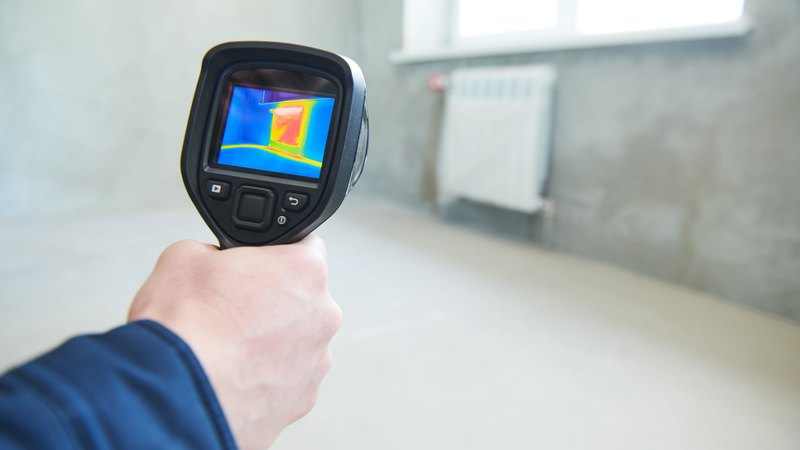Trusted Leak Detection Services: Accurate Solutions for Every Leak Concern
Trusted Leak Detection Services: Accurate Solutions for Every Leak Concern
Blog Article
The Duty of Advanced Modern Technology in Modern Leakage Discovery Solutions for Reliable Solutions
In the realm of modern leak detection solutions, progressed modern technology has ushered in a brand-new era of effectiveness and accuracy. The integration of IoT, wise sensors, and advanced strategies like acoustic discovery and thermal imaging has changed how leakages are determined and taken care of.
Evolution of Leakage Discovery Innovation
The evolution of leakage discovery technology is a testimony to innovation and the relentless search of accuracy. Historically, the detection of leaks, whether in pipelines or commercial systems, relied heavily on primary and commonly inefficient approaches.
Over the years, innovations in modern technology have changed leakage discovery right into an innovative area. These sensing units make use of a variety of methods, such as acoustic, infrared, and ultrasonic methods, to identify leakages with remarkable accuracy.

Trick Advancements in Leakage Discovery
In current years, essential developments in leak detection have reinvented the industry, bringing unprecedented accuracy and effectiveness to the center. Among these improvements, the assimilation of IoT and wise sensing units is notable, making it possible for real-time surveillance and information transmission. These gadgets can spotting minute modifications in pressure and circulation, enabling for fast recognition of leakages before they escalate right into substantial concerns.
An additional pivotal growth is making use of acoustic leakage detection modern technology - water leak detection. By using extremely delicate microphones and progressed algorithms, this approach can identify leaks based upon sound patterns. This technique is especially effective in recognizing leakages in complicated piping systems where aesthetic assessment is impractical
Thermal imaging innovation has actually also made significant strides, providing a non-invasive approach to detect leaks by capturing temperature level variants. This technology is specifically valuable in detecting leaks in shielded or below ground pipelines, supplying a clear aesthetic representation of the problem.
Benefits of Modern Methods
Modern leak detection methods supply countless benefits, considerably improving operational effectiveness and cost-effectiveness for companies. Among the primary advantages is the ability to quickly and properly recognize leakages, lessening downtime and preventing comprehensive damage. By utilizing sophisticated technologies such as acoustic sensors, infrared thermography, and advanced data analytics, services can identify leakages with precision, even in complex or inaccessible systems.
These modern techniques also lower labor costs and resource allocation. Conventional leakage discovery commonly required extensive excavation and guidebook assessments, which were expensive and lengthy.
By enhancing the detection process, companies can designate resources more properly, concentrating on repair work and system enhancements rather than extensive search initiatives. On the whole, modern-day leakage discovery methods supply a calculated advantage, empowering organizations to optimize their operational frameworks and accomplish long-lasting sustainability.
Environmental Effect Reduction

Additionally, using innovative innovation in leak discovery contributes to the reduction of greenhouse gas emissions. By quickly determining and attending to leaks, particularly in gas pipelines, it is possible to significantly reduce methane exhausts, a potent contributor to climate change. Furthermore, progressed leakage detection systems advertise lasting source management by decreasing waste and maximizing making use of water and power sources. The integration of these technologies right into leak discovery solutions not only lines up with regulative conformity yet likewise supports business obligation initiatives focused on reducing environmental footprints. Hence, progressed leak detection innovation is essential in fostering a more durable and lasting future.
Future Trends in Leakage Detection
The future of leakage discovery innovation assures transformative improvements that will certainly redefine market criteria. As the demand for lasting and efficient facilities grows, the integration of advanced modern technologies like artificial knowledge (AI) and the Net of Points (IoT) is set to reinvent the field. These technologies will certainly enable real-time tracking and predictive maintenance, lowering the probability of leakages and decreasing ecological impact.
.jpg)
In advice addition, the usage of drones equipped with thermal imaging and progressed optics supplies a non-invasive approach for evaluating hard-to-reach areas. This modern technology not only boosts the accuracy of leak detection however also makes certain the safety and security of workers by minimizing the need for manual examinations in dangerous settings.
Furthermore, innovations in data analytics and cloud computer will certainly promote the combination of leakage discovery systems right into broader possession management systems, offering extensive oversight. These future patterns emphasize a change towards more intelligent, automated, and lasting leakage detection options.
Conclusion
The integration of innovative modern technology in leakage detection solutions stands for a substantial innovation in effectiveness and accuracy. Real-time surveillance via IoT and clever sensing units, coupled with methods like acoustic discovery and thermal imaging, improves system reliability and functional cost-effectiveness. These advancements add to environmental security by minimizing dangerous launches and sustaining lasting source monitoring. As technology water damage service proceeds to evolve, future fads will likely concentrate on more improving these capacities, making certain even more thorough and aggressive leakage discovery approaches.
In the world of modern-day leak discovery services, progressed technology has ushered in a brand-new age of performance and accuracy.Leveraging innovative modern technology in leakage discovery not just improves functional effectiveness yet additionally plays an essential function in environmental impact reduction. Early and precise discovery of leakages, facilitated by ingenious technologies such as acoustic sensors, infrared imaging, and real-time monitoring systems, considerably decreases the volume of unsafe materials launched right into the atmosphere. The assimilation of these technologies into leakage detection services not just lines up with regulative conformity yet likewise sustains corporate duty initiatives intended at reducing environmental footprints.The assimilation of innovative technology in leak detection services represents a significant innovation in effectiveness and accuracy.
Report this page